Connie Bombaci's Blog, page 9
February 28, 2018
The Inspiration in Writing Hogan's Hope
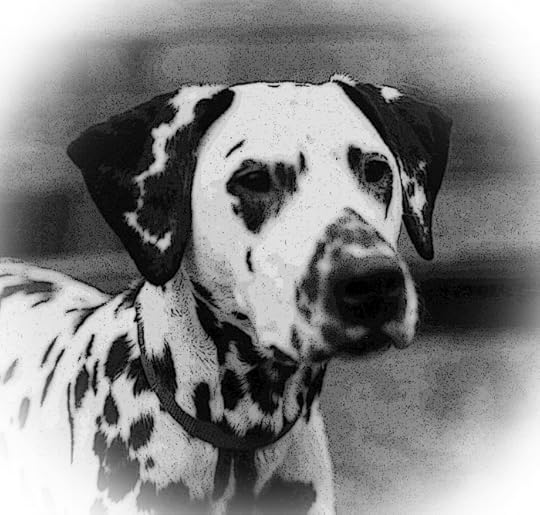
[God is the only one who can make] the valley of trouble a door of hope.
Hosea 2:15
Writing the story of Hogan's life was more than accounting for the events of my special pup who brought so much into our life as a family. The writing was a journey - a journey through the daily events, the learning, and the discoveries of living with a beautiful, God-created being who, because of human breeding, was born deaf. I am not a writer by trade but a person who loves all creations and wants the world to know how amazing our deaf dogs truly are.
When Hogan came into my life, he was adopted as a brother to our very energetic and playful, black Labrador named India. And, for all of us, it was truly "love at first sight." Bringing Hogan home was nothing less than a magnificent blessing, and he gifted us with a greater understanding of what deaf dogs encounter in the human world - misunderstanding, rejection, and often destruction.
I continue to find it impossible to believe that there is any good reason for deaf dogs, any dog, to be destroyed, mistreated, or abandoned because of predetermined prejudice and misconception. Hence, one of my reasons to write the book, Hogan's Hope. It tells the story of a deaf puppy who was rescued from neglect, adopted into a forever home, and went on to learn, grow, and demonstrate how extremely successful a "handicapped" dog can be in living a perfectly "normal" life.
Hogan provided the message of hope for a life filled with love and acceptance for many deaf dogs worldwide. By telling his tale of valor, I believe that his courage to overcome challenges and human prejudice can continue to offer inspiration to anyone, human or pet, that accomplishment, success, and genuine love are truly possible. Hence, my main reason for needing to write Hogan's Hope. Through his lifetime of determination, Hogan offers all of us the promise that we are capable of achieving any goal that we set for ourselves, no matter what our particular "obstacle." By holding onto hope, we receive the gift of inspiration and the greater belief that we, each and every one of us, are worthy of being loved and accepted.
Anything is possible if we continue to hope. Hogan never gave up his hope, and his dreams came true. More than anything, I want his book, Hogan's Hope, to offer the insight into the world of true faith, unconditional love, and endless hope.
"Once you choose HOPE, anything is possible."
Christopher Reeve
February 21, 2018
Past News Coverage of Deaf Dogs, Hogan and Georgia
October 2, 1995 the New Haven Register published an article about my first deaf dog, Hogan. This article was one of the springboards for Hogan's publicity to begin and bring the message that deaf animals are worthy of love and acceptance to the world.
This is a copy of that article courtesy of the New Haven Register.
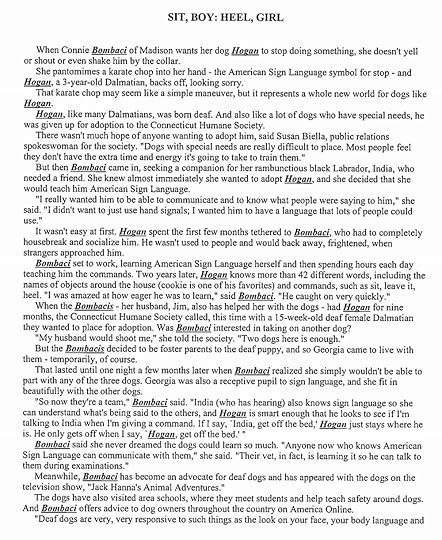
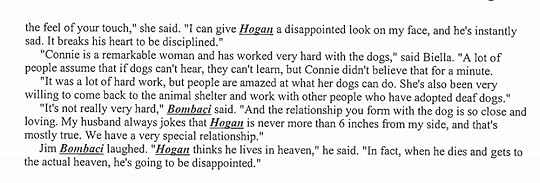
February 12, 2018
What is Finland Like for the Deaf?
Guest writer, Rosie Malezer - Readers’ Favorite Official Reviewer
It is a question asked so often and, while the typical answer is true, it is not the whole truth and nothing but the truth. Yes, it is true for the majority of Finns that Finland is one of the luckiest countries in which a person could live... unless you are Deaf. That small difference is the that between being housed or homeless, being employed or discarded as too stupid to work. Deaf people in Finland are begging to be heard. Income, housing and basic human rights are something a Deaf person in Finland would give anything to have.
Even when the law courts of Finland have demanded that a Deaf person be treated with respect and dignity, the social institute of Finland, KELA, outright refuses to obey such a court order. How do I know this? I am Deaf. The courts have ruled that KELA stop acting so shameful and permit me my basic human rights. At first, KELA conceded that they would do so - this lasted for less than 24 hours before they rescinded their decision to provide any assistance to one of their own law-abiding citizens and defy the courts of their country.
My advice to anybody who is Deaf: DO NOT come to Finland unless it is for a short-term vacation and you are accompanied by a hearing person. As a Deaf person, you will see the vast beauty of Finland's landscapes and incredible fauna - too beautiful for words. You will also learn of a new word - SURDOPHOBIA (the fear and loathing of Deaf people) - as many people's backs turned the moment they realise you are Deaf.
The Poliisi of Finland are the only exception to this rule, but they are helpless to act. They are frustrated and angry also at the way that Deaf people are treated by government and Finnish people. I would give anything to be living in Australia right now, surrounded by my family, yet once again hiding every day and night from the man who has vowed to police to kill me - my abusive, former spouse. But after the death of my baby and injuries inflicted upon me which cost me a year of my life, I know I can never return home.
I live in Finland with my Finnish husband. We had a choice of which country we would live out our lives and, due to his culture shock with the weather, we both chose Finland. It was a decision made eight years ago when we married. My options, however, are now coming to an end. The powers that be in Finland have, again, turned their backs on the basic human rights and needs of the Deaf of Finland.
Rosie Malezer x
January 25, 2018
Love & Acceptance
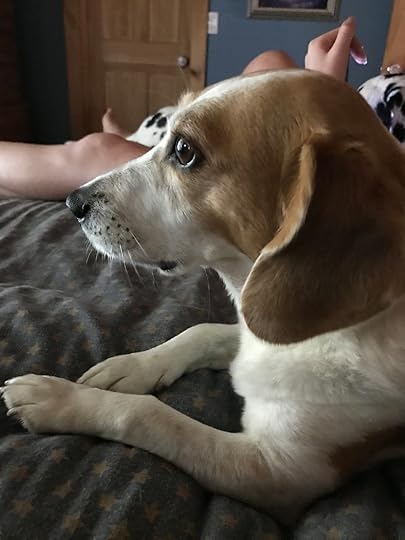

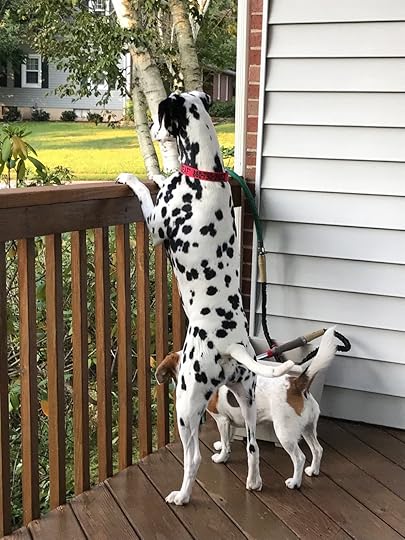


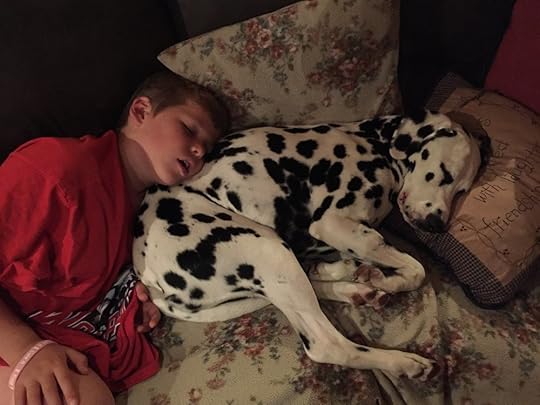
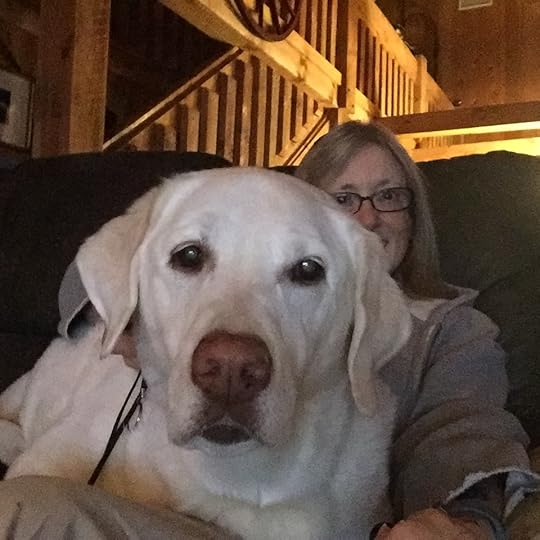
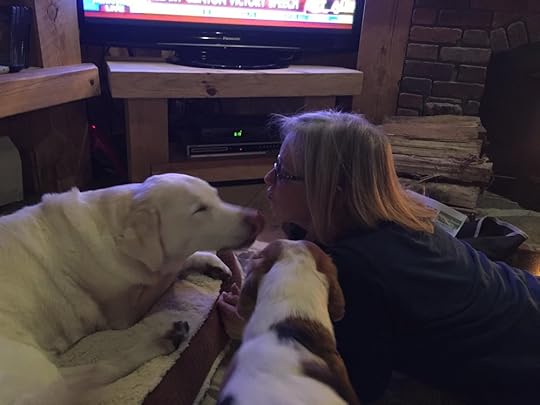
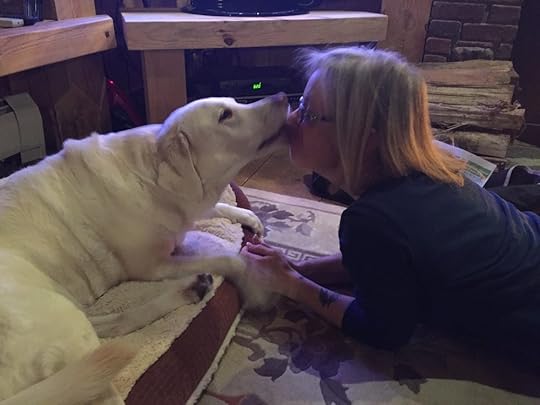

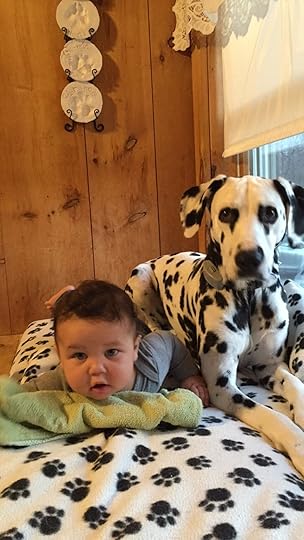
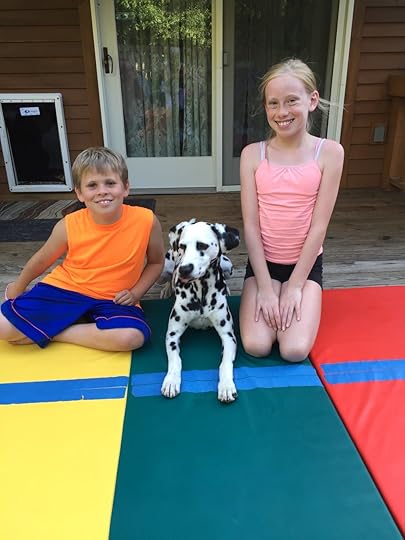


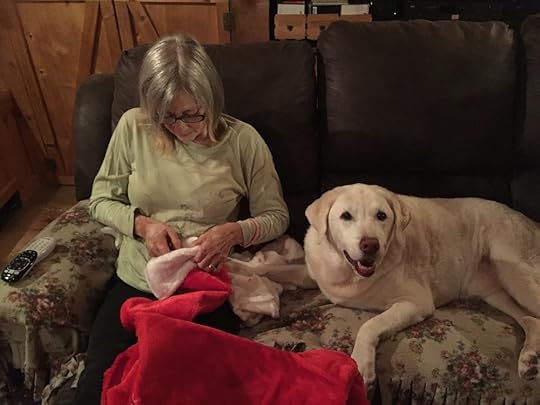
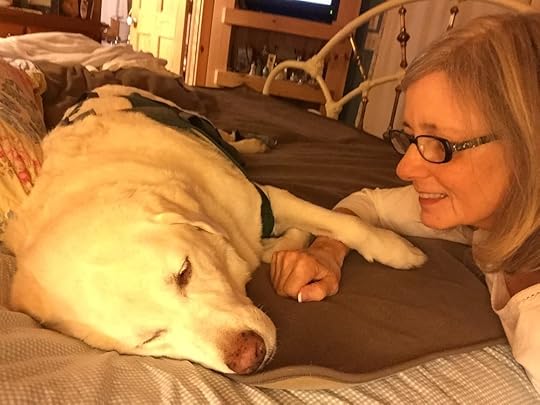
The last two weeks have been exceptionally difficult for me. Why is it that many of us find it hard to admit our weaknesses and feel almost obligated to only show our upbeat and happy sides no matter what is happening? "Fake it until you make it," is an expression that was drilled into my head when I was feeling less than "perfect." Goodness, we mustn't let anyone see us sad or hurting, much less crying, right?
I often hum or sing a tune that matches my mood. I especially perform this ritual when I am disheartened and have a few favorites that I sing or play in my mind to help lift me out of the slumps. One is the song, Smile, by Charles Chapin, John Turner and Geoffrey Parsons. Some of its lyrics include: "Smile, though your heart is aching. Smile, even though it's breaking. When there are clouds in the sky you'll get by. If you smile through your fear and sorrow. Smile and maybe tomorrow. You'll see the sun come shining through for you." Again, no one should see us hurting inside.
Maya Angelou stated, "My great hope is to laugh as much as I cry; to get my work done and try to love somebody and have the courage to accept the love in return." For me, loving someone is so much easier than accepting love in return . . . . EXCEPT when it comes to my blessed, God-given pups. Their love is pure. Their love is unconditional. And, their love is everlasting. I don't need to worry whether or not I am "worthy" or "good enough." I also don't need to worry whether or not I made a mistake or have a bad habit that needs correcting. I am accepted and forgiven without reservation. No dust needs to settle - I am simply forgiven. Sure, they squabble but they let each other know immediately when there is a need for correction. No waiting. No hesitating. It is what it is! And, what is amazing - their hearts don't seem to have room for holding onto grudges or for thoughts of past errors. It's over; it's done. They show love continually to each other, our family, and our friends.
I continue to learn from my pups are capable of teaching me more lessons than I can imagine. The list is endless -
loving unconditionally,forgiving relentlesslynever wasting energy by holding onto grudges,being me,not being afraid to share my emotions and moods,living in the moment,playing,greeting my family and friends with excitement,trusting those who trust me,knowing who to trust,giving lots of hugs and kisses,accepting that I don't need to be perfect,accepting my shortcomings as well as strengths,listening carefully,speaking with kindness,correcting with gentleness,enjoying my cookies!. . . . . . . . . . . . .While my physical and emotional pain has been difficult these past couple weeks, I reflect on some statements made by others as I try to remember to be as kind to myself as I truly want to be to others.
"Success is not final, failure is not fatal: it is the courage to continue that counts." Winston Churchill
"No matter how dark the moment, love and hope are always possible." George Chakiris
"Words which do not give the light of Christ increase the darkness." Mother Teresa
"'The Lord is my shepherd, I shall not want. He makes me lie down in green pastures, he leads me beside quiet waters, he refreshes my soul. He guides me along the right paths for his name’s sake. Even though I walk through the darkest valley, I will fear no evil, for you are with me; your rod and your staff, they comfort me. You prepare a table before me in the presence of my enemies. You anoint my head with oil; my cup overflows. Surely your goodness and love will follow me all the days of my life, and I will dwell in the house of the LORD forever." Psalm 23 NIV
God bless you, dear friends. Be good to yourselves.
January 6, 2018
Cold Weather Tips for our Pets
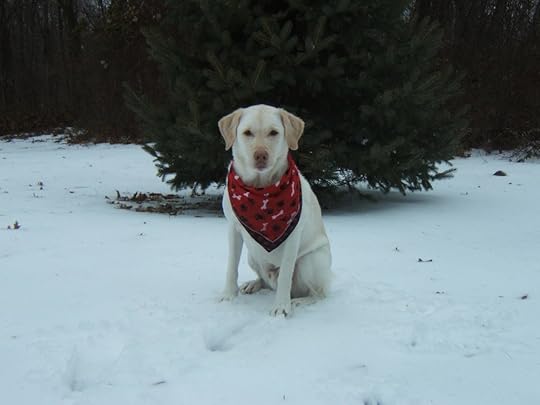
1. Remember: if we're cold, our pets are probably cold.
Winter can be hazardous for our beloved pets if we do not consider the risks of cold weather and its impacts. Even when our pets love being outside, frostbite and hypothermia are deadly threats and we must let them out for only short periods of time. Thinking that "they have fur coats" is extremely short sited, and we need to outfit them with jackets, sweaters, and even booties. Thinner, older, younger, or short-haired pets are more susceptible to the elements.
2. Remember: Buy and use pet-safe antifreeze, de-icers, and pavement "salts."Winter brings out all different types of deadly chemicals such as antifreeze, de-icers, windshield fluids, and salt. Keep all these items stored where our pets can't get into them, cleaned off garage or driveway surfaces, and cleaned off their paws. Wipe and even wash their paws and undersides after returning home and check carefully to make sure they don't have any injuries caused by the chemicals or icy walks. Don't let them lick their paws or tummies until you are completely certain that all toxic chemicals have been removed.
3. Remember: Keep our pets away from ice and frozen ponds, lakes, streams, or rivers.Ice cannot only cause injury to the paws but poses an extreme danger on frozen water reservoirs of any type. Our animals can be killed when thin ice breaks and they fall through. Avoid ice no matter where it is!
4. Remember: Use a leash when we go on walks.Keeping our pets safe is our number one priority. By using leashes, we are able to keep our pets close and unable to run into unsafe areas such as roadways or onto thin ice.
5. Remember: Use reflective clothing and equipment when walking early in the morning or after dark.6. Remember: Leave our pets at home.Our pets can become subject to extreme temperatures if left unattended outside or in our vehicles. It is much better and safer for our pets to be "cozied up" inside a warm home than left in an unattended cold vehicle. Going everywhere is fun but can become a dangerous threat to their well being.
7. Remember: Provide shelter.Protection from the harsh elements of winter is imperative. Even if our pets live primarily outside, they need to be shielded from sub-zero temperatures, winds, and winter storms. An appropriately sized enclosure needs to be dry and warm with a surface of straw or bedding. Its doorway needs to be covered and away from the blowing winds. Pet doors installed in our homes are great for letting our pets in when we aren't at home.
8. Remember: Feed more!Our pets need to have more "fuel" in order to be able to stay warm, especially if they spend time outside. We also need to check water bowls and use bowls that our pets' tongues won't freeze to.
9. Remember: Bang the hood of our cars.Small animals may seek shelter in the engines of our cars. Bang the hoods of our cars to make sure no kitty, squirrel, etc. are up inside.
10: Remember: Think about our wildlife.We need to make sure that our bird feeders are full. We can also provide extra shelter for birds by placing our Christmas trees on their sides at the base of the feeders. All our wildlife can benefit from us sharing some of our resources with them and buying some wildlife feed.
December 14, 2017
Ticks and Fleas are a Winter Threat
This post is shared from the Madison Veterinary Hospital information. Thank you for helping us keep our special, four-legged family members safe and healthy!
Posts by: Dr. Ruth MacPete, DVM
Dog Checkups & Preventive Care
Did you know that ticks are not just a spring and summer problem? You might be surprised to learn that ticks can be found year round, and not just in warmer climates. A 2010 study from the Journal of Clinical Investigation showed that some infected ticks have actually developed a type of anti-freeze glycoprotein to survive the cold. Unfortunately, this means that just because winter has arrived, dog parents cannot let their guard down when it comes to ticks.
Why should winter ticks concern you?
Ticks are found throughout the United States and can spread diseases like Lyme disease, Ehrlichiosis, Rocky Mountain Spotted Fever, Anaplasmosis, Tularemia and Babesia. Lyme disease and other tick-borne illnesses are a significant source of morbidity in people and dogs — in particular, Lyme disease; the CDC says it has been reported in almost every state as of 2013, and its prevalence is increasing in the Northeast, Southeast, and Midwest according to a Parasites & Vectors report found here. Check with your veterinarian about the risk of Lyme disease in your area and click here to view the prevalence maps for Lyme and other tick-borne diseases.
Signs and symptoms of tick-borne illness
The signs and symptoms of tick-borne illnesses depend on the particular illness. For example, Lyme disease symptoms may include:
Many other tick-borne illnesses have no signs or take months for symptoms to develop. Since many of these illnesses either have subtle signs and symptoms or mimic other diseases, screening for tick-borne illnesses is a vital component of a dog’s annual exam. If your dog has been exposed to ticks, speak with your veterinarian about screening tests and prevention rather than waiting for symptoms to develop. Click here for potential symptoms of more tick-borne diseases.
Treatment of tick-borne disease
Treatment varies depending on the type of tick-borne illness. Lyme disease is caused by the bacterium Borelia burgdorferi and is treated with broad-spectrum antibiotics. Other tick borne illnesses caused by different pathogens require different antibiotics.
Diagnosis of tick-borne disease
Since many affected animals may not show signs of disease, or may take months to develop symptoms, screening tests are a vital component of a dog’s annual exam. These tests screen for the most common tick-borne illnesses, such as Lyme disease, Ehrlichiosis, and Anaplasmosis.
How to protect your dogs from winter ticks
Speak with your veterinarian to find out if ticks are a year-round problem in your area and if she recommends your pet be vaccinated for Lyme disease.
Consider these three tips to help protect your dogs from tick-borne illnesses:
While spring and summer are the most dangerous times when it comes to ticks, it’s important to remember that these creepy critters can be found year-round depending on the weather in your area. By keeping your dogs on tick preventatives, screening for tick-borne illnesses yearly, and checking for ticks, you are doing everything you can to keep your dogs safe from ticks.
Click here to learn more about parasite protection.
If you have any questions or concerns, you should always visit or call your veterinarian -- they are your best resource to ensure the health and well-being of your pets.
Related symptoms:
November 29, 2017
One Dog's Purpose
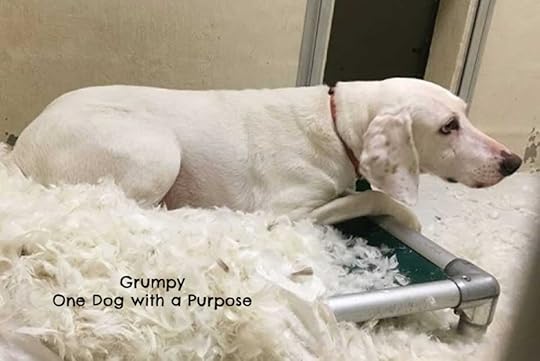
This is a remarkable story that I am compelled to share. The writer requested everyone to share with friends and so I do. Source: Pawpulous
"Gumby is a dog of action that could not be contained. As a hound, he had the tendency to wander. And over the years he became quite the escape artist. According to BarkPost, Gumby was about 3 or 4-year-olds when he was found wandering the streets of South Carolina and taken in by the Charleston Animal Society.
He was handsome, healthy, and exceptionally friendly, so the staff at the Charleston Animal Society didn’t think twice about whether or not he’d be adopted.
And he was. They just miscalculated how long he would be adopted for. His first adoption lasted an entire three days. His second adoption only lasted six days.
Gumby spent the next two years being adopted and returned back to the shelter. He was taken back by to the shelter his adoptive parents eight times and was picked up off of the street three times.
His adoptive families just didn’t know what to do with him because he would constantly escape.
Finally one of the staff members at Charleston Animal Society figured out why Gumby would always return to the shelter.“He knows he has work to do,” Behavior Team Leader Donya Satriale said.
It was discovered that Gumby had a special skill. The Charleston Animal Society’s staff discovered that Gumby is an empath and has the ability to comfort incoming dogs who are experiencing fear and anxiety.
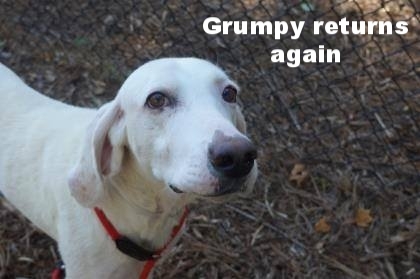
So instead of continuing to try and place Gumby in a new home, he now works with Satriale on her team and lives in the shelter. He serves as the “Ambassa-Dog” and helps with behavioral demonstrations and helping new dogs adjust.
Thankfully, the Charleston Animal Society is a no-kill shelter. If they hadn’t been, Gumby may have faced a different fate.Gumby also has a second job at the Charleston Animal Society. He helps to heal sick kittens with eye infections. Gumby donates blood every two weeks which is used to help the cats get over their infections.
“Gumby gives back! Remember Gumby the white hound who returned to the shelter 11 times and now is our playgroup King?” the Charleston Animal Society wrote on their Facebook page. “Well, he is now a blood donor for kittens with eye infections! We draw his blood every two weeks extract the white blood cells from his blood and administer to the kittens’ eyes! (Healing eye drops) The serum from his blood has healing properties! Opie will heal faster.”
You can help the Charleston Animal Society help dogs like Gumby by checking out their website and making a donation here."
"Please SHARE this with your friends and family."
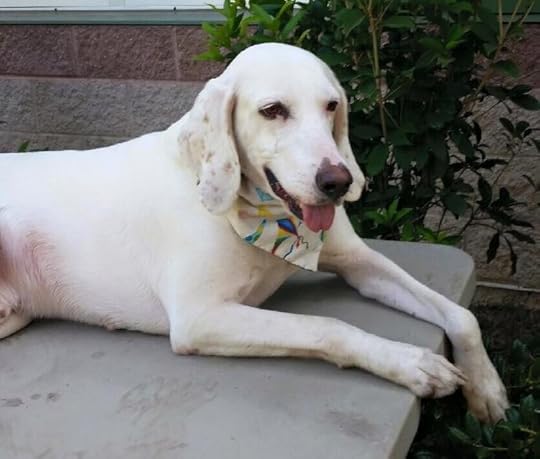
We all have a wonderful purpose and Grumpy shows us that every one of God's creations is special, unique, worthy, and acceptable.
October 29, 2017
Reader's Choice Awards Nomination by TCK Publishing

I continue to give myself a pinch every time I look at my published book or hold it in my hands. Having never thought of myself as a writer let alone a published author, my book, Hogan's Hope, is a "dream come true." My "dream" now is that his message of hope for anyone to live a full and successful life can be spread to everyone and I work to share his purpose and legacy.
Hogan's Hope: A Deaf Hero's Inspirational Quest for Love and Acceptance has been nominated in the General Non-Fiction Category and needs everyone's vote! So please click on the logo above, go over to the 5th page (General Non-Fiction), and scroll down to Hogan's Hope.When we rescued Hogan in 1993 at the age of 18 months, almost all deaf dogs were being destroyed, mistreated, or abandoned. Hogan's is a tale of a deaf dog who prevailed as he learned over sixty -five signs in American Sign Language. His ability and tenacity provided the hope of life for many deaf dogs worldwide and his courage to overcome challenges and prejudice continue today to give inspiration to anyone, human or pet, that accomplishment, success and genuine love are truly possible. He overcame all the myths.
We adopted Hogan as a deaf, malnourished puppy whose early abuse made him wary of new situations and locked him in a world of silence. Being teachers in the public school system, we quickly decided that teaching Hogan sign language would be the cornerstone of communicating with him. Gradually he learned to trust us and became confident in relating to new people, other animals, and unknown circumstances. Little did we know that Hogan's story would lead to numerous requests for interviews, news stories, and public appearances. Some of these programs included Oprah Winfrey, Jack Hanna's Animal Adventures, Dateline with Dennis Murphy, Positively Connecticut with Diane Smith, Amazing Tails, and Good Morning America. Two separate radio interviews to Japan began the international buzz that deaf dogs are intelligent, do learn, can lead completely normal lives, are loving, and make wonderful family members.
Through his lifetime of determination, Hogan's journey offers the promise that we all are capable of achieving an amazingly "ordinary" life and a life away from isolation. His tale of valor reveals that dreams do come true and offers insight into the world of true faith unconditional love and endless hope.
"Once you choose hope, anything is possible." -Christopher Reeve
Please help us with your vote. Thank you in advance for your support and encouragement.
October 2, 2017
Acceptance of Service Dogs
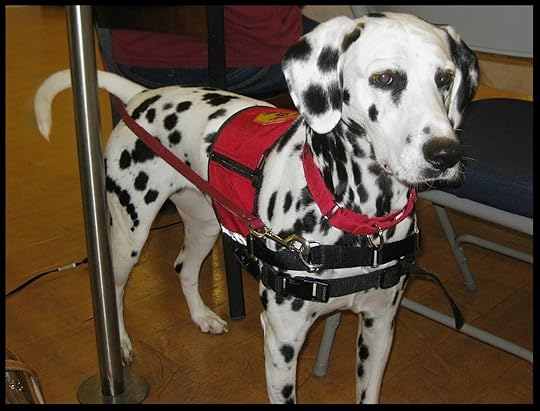
My book, Hogan's Hope: A Deaf Hero's Inspirational Quest for Love and Acceptance, is based in the message of hope and achieving one's dreams no matter what the challenge. Over the weekend I encountered a challenge that needed acceptance -- the challenge of needing a service dog and not being accepted.
The United States Department of Justice has written The Americans with Disabilities Act to help those of us who are in need of a Service Dog stating "If you are an employee or owner of any business open to the public including, but not limited to, restaurants, hotels, taxis, shuttles, stores, medical facilities, theaters, parks, health clubs or zoos and you are being given [a] card [stating these requirements], you have probably violated the federal Americans with Disabilities Act (ADA) and the civil rights of the card-holder. Violators of the ADA can be required to pay money damages and penalties."
My experience was hurtful and unnerving to state it mildly. Being told that "you can't have that dog here," "I would never have approved of the dog being here," and "I wasn't informed" hit hard. When I attempted to offer explanation and written information, I received the response "I don't need that card". A fiery-eyed exclamation of "I don't want to talk to you!" came after I tried to alleviate her concern of "not wanting to be sued" by offering her our certificate of insurance. I tried to remain understanding of the person's lack of knowledge but kept thinking to myself that the person had no idea of what a service dog is and why I need a service dog. Even more importantly, what if this were someone else?
I will be the first to admit that beautiful Judea is not what many people picture as the typical-looking service dog. Many imagine a German Shepherd or a Labrador, not a deaf Dalmatian. And, when I am out on book signings about a deaf Dalmatian I had years ago, Judea does draw folks to want to touch or pet her. I honestly believe that any dog, or any animal, who accompanied me to an event would draw more people to come and visit us. Animals who love us unconditionally tend to do that, and Judea is one of the sweetest pups I have been blessed with. But that isn't the heart of the issue.
So, we need to ask ourselves the important question, what is a service or assistance animal?
A service animal is any animal individually trained to perform tasks for a person with a disability (PWD).
A PWD may be asked what tasks the service animal performs but may not be asked for special certification or identification cards and may not be asked about the disability. A PWD may not be charged additional fees to be accompanied by a service animal.A PWD accompanied by a service animal must be admitted and may not be isolated, segregated, or treated less favorably than other people.There are many types of service dogs, and some even serve multiple purposes. Guide Dogs for the blindHearing Dogs for deaf or hearing impaired personsMobility Assistance Dogs for wheelchair-bound persons or those with mobility limitations including balanceSeizure Response Dogs to protect and help persons with seizure disorders when a seizure occursDiabetes Assistance Dogs to detect blood sugar highs and lows (dogs are scent-trained)Mental Health Service Dogs or Psychiatric Service Dogs are task-trained to assist those with PTSD, panic disorders, anxiety disorders, major depression, Autism Spectrum Disorders and much more.Any dog can be a service dog, and service dogs do not have to be professionally-trained. The important thing is that the dog is trained to be a working animal.There is an established Service or Assistance Dog Etiquette
Some disabilities are obvious and visible. Some disabilities are not obvious.Service or assistance dogs guide people who are blind, alert to sounds for the deaf, alert to medical conditions and provide physical support, among other tasks.Unless the handler releases the dog, people should not pet, talk to, or make eye contact with the animal. Nor should people call to, whistle at, or otherwise distract a working dog.Interfering with a service or assistance dog is against both state and federal law.Some individuals may elect to train their own service dogs. There are diverse reasons for this decision cited by owner-trainers, including the failure of existing programs to answer unique needs, closed waiting lists of pre-established training organizations, and extensive knowledge of dog training. Owner-training of one's service dog is permitted, and becoming more common, in certain countries, primarily in the U.S. and, to a lesser extent, in both England and Ireland.In the U.S., service dog owner-trainers may opt to train breeds not commonly associated with service dog work, a fact which has led to both great success and great controversy, as the primary federal law addressing service dogs "does not restrict the type of dog breeds that can be service animals."The need to control often obliterates the opportunity of accepting one another. Statements such as "I manage this [area]!" rather than reaching out in an attempt to understand or learn the circumstance create great divides and even greater hurt of exclusion.
My reason for writing this particular blog on this particular issue is to bring a brighter light onto the issue of acceptance. My hope is that we can accept each other as we are and not as another person believes we should be; that we can reach out in kindness and empathy and not hasty conclusions; that we will actively listen and really communicate with each other rather than shut the other person out; that we attempt to understand rather than jump to any rash judgment. I believe in the goodness of each person and forgiveness is a must. I truly don't want anyone else to be subjected to rejection. I hope for love and for acceptance of our individual challenges.
God bless.
[image error]
May we all learn from our canine companions who, according to a study done by Goldsmiths College in London, " demonstrate behaviors consistent with an expression of empathetic concern." Let us all care for the needs of each other.
September 21, 2017
The Glorious Blessings of our Deaf Dogs
It's been a month since my last writing but it's been seven years already since we helped rescue our sweet, loving Judea. Watching this wonderful video of our deaf dog run free and happily makes my heart rejoice with the blessings that I have been endowed with her in my life.
This also causes me to reflect on the blessings that all my dogs have brought into my life, and . . . the lives of so many others, directly and indirectly. I hope to share with you some of the thoughts that others have written in notes to me when Hogan, our first deaf dog, was still alive. Their words tell how one blessing multiplies into many.
Back in 1996 I met a wonderful woman by the name of Jane Colton who lived in New York City. She rescued not one but two beautiful, deaf Dalmatians, Dotty and Spotty. Jane and I met on the Internet because we shared the love of our deaf four-legged children. She helped to create memories for us and for the nation. Because of her perseverance in proclaiming the worthiness of our deaf dogs, she "hounded" Dateline until producer Betsy Osha responded and produced the segment "Deaf Sentence" in December of 1996. In one of her many notes after I sent her a pocket handbook on American Sign Language and my list of tips for working with deaf dogs, Jane wrote:
Connie, I want to thank you for the book you sent me. When I received it, I read it before I went to bed. I found the analogy between the signs and what they were trying to convey so interesting. The next day I had to fly to San Francisco. There was a young man who looked like he was having trouble understanding me. Believe it or not I was able to ask him, in signing, if he was deaf and asked if he could read lips. I then signed to him that my two dogs were deaf and then asked if he understoof me. He said, "Yes," and wrote me a little note saying his name is Alex and that his eyes were red because he was leaving all his friends behind to move to Australia. I had saved the note for you but somehow it fell out of my pocket. So, I guess your book will have a dual purpose perhaps. Thank you so much.
I'm sending you pictures of the dogs neither of which may be alive today if you weren't there to let me know that they could be as happy as any other dog. On look at Spotty's face and you can certainly tell that . . . . she says thanks, too!!!
It's because of our deaf dogs that she was able to help another human being whose heart needed someone to reach out to him. If we hadn't shared our mutual love of our deaf dogs, this hurting young man would have been left alone, abandoned so to speak.
Our love and acceptance have ripple effects. Hogan's hurting and abandonment turned into a world of love and acceptance because someone reached out and rescued him. His hope to connect with others was realized through signing and he triumphed. We now reach out to each other in love and acceptance because of our sensitized hearts that we all are worthy.
I have set a new goal -- to share some of the marvelous stories, letters, or notes from families who have been blessed with an extraordinary gift of a deaf dog. Perhaps through their lives, words, and hearts, the message that deaf dogs are worthy of love and acceptance will become more than crystal clear and heart awakening.
Please watch the video again and enjoy the happiness of one very special, deaf pup who blesses my life every second of every day!
God bless!
"There are none so deaf than those who refuse to listen."



